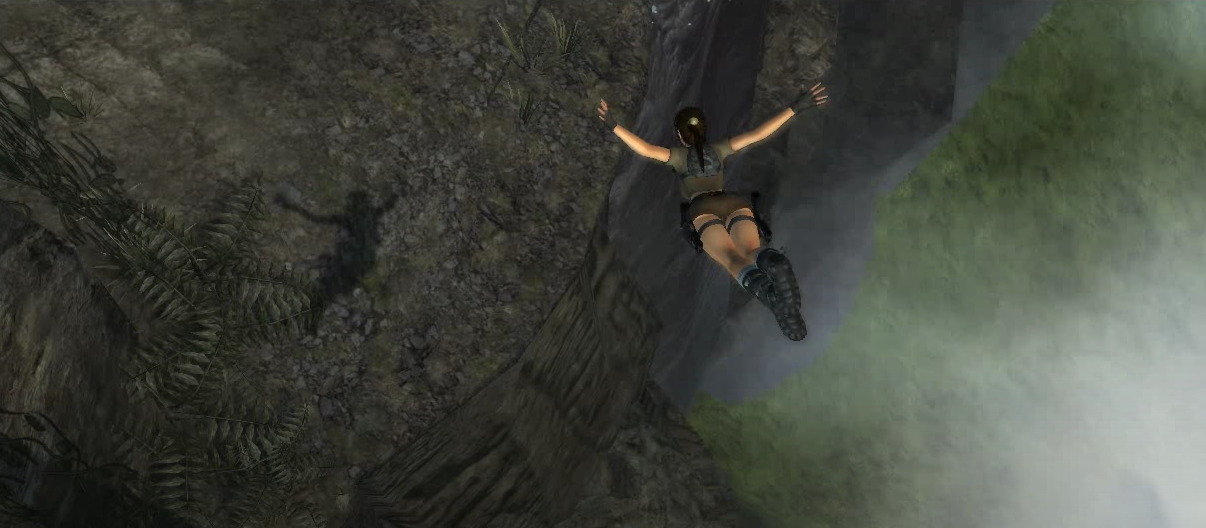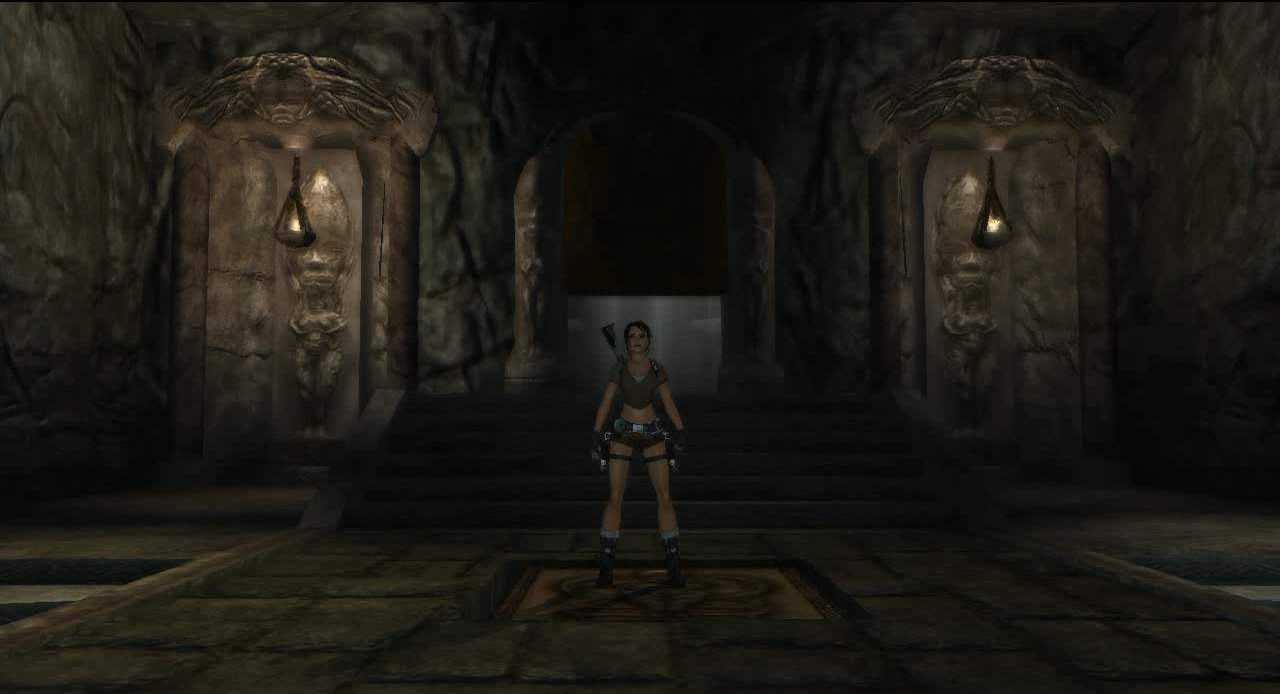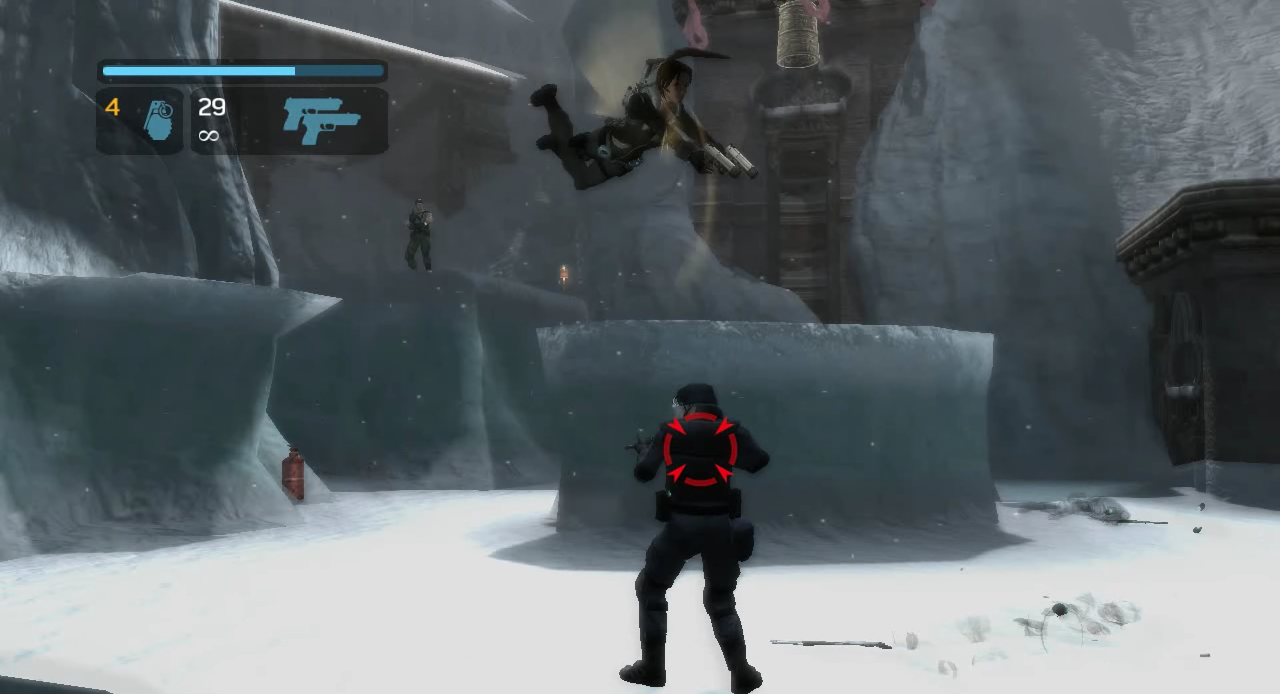

“It’s like going up a set of stairs, only far less boring.”
Lara Croft’s been in a lot of games. Like Master Chief or Solid Snake, she’s a gaming icon whose popularity has fluctuated based on the reception of new entries in the Tomb Raider series. After the quality of the series reached a low point with its sixth game, Angel of Darkness, publisher Eidos Interactive moved development of the next sequel from Core Design—who had developed every game Tomb Raider game up to that point—to Crystal Dynamics, well-known for their work on the Gex and Legacy of Kain series. Instead of creating an iteration on the previous games, the new developers were given free reign to revamp and reimagine the origins and abilities of the protagonist. Original Lara Croft creator Toby Gard was brought on board, and the game was considered a return to form, with the player guiding the game’s heroine through gunfights, acrobatic maneuvers, environmental puzzles and, of course, tomb raiding.
Tomb Raider: Legend is a return to Lara Croft’s roots. It most clearly recalls the globe-trotting adventures of Tomb Raider II, and fans of the older games will find the game evokes pleasant waves of nostalgia.1 It’s not an innovative game, by any means, but a solidly made puzzle-platformer with a plenty of grabbing, shooting, lever-pulling, and rope-swinging and a good amount of Indiana Jones-tinged story beats. The most noticeable change is the addition of the grapple, which opens up a slew of new options to play around with. Stopping swinging blades, remotely tripping enemies, and jumping across large pitfalls are now all potential ways of solving your problems.

The “legend” of Lara Croft is updated, tweaking her background and giving the character a different motivation. Instead of surviving a plane crash in the Himalayas as a young woman, a nine year old Lara survives the crash with her mother. They shelter in a Nepalese temple, where Amelia Croft disappears after messing around with an ancient sword. In the present day, Lara is directed to the ruins of Tiwanaku, an archeological site in Bolivia, where she finds an ancient stone dais similar to one that she tampered with in the Nepalese temple where her mother vanished. Throughout her adventure to uncover the mystery of the sword, Lara pits herself against a friend that she had previously left for dead and an intellectual playboy who mercenarily pursues the magical sword as well. The story has enough fantastic artifacts, locations, and intrigue to keep the player engaged in the plot, visiting a half dozen countries and drawing inspiration and imagery from a number of different religions and myths. It pushes too much into mysticism/magic for my tastes, which would have preferred a bit more grounding, but it’s still a good bit of over-the-top fun.
The gameplay is also nicely varied. In addition to exploring ruins—which involves puzzle solving, gymnastics, and fights with leopards—there are several motorcycle missions as well as levels where Lara explores a research facility and jumps around on skyscrapers. The game is mission-based, and so therefore “linear,” but it is much more challenging than simply moving from one area to the next. Often, a puzzle can be tricky enough to require a few moments of thinking (or, in the case of dangerous ones, a few rounds of trial and error), and there are a number of collectables scattered throughout the game that are easy to miss. That being said, once you figure out the general trend of the puzzles, some of them do get a bit repetitive.

Controlling Lara feels very fluid and fun, as you acrobatically fend off enemies, maneuver around the environment, and scrape with death, and the 3D movement is a vast improvement over the previous games in the series. A mostly useless but fun combat trick available to the player is to run toward an enemy, leap at their head, then boost yourself into a slow motion flip during which you can shoot the enemy.2 Otherwise, the shootouts and enemy AI are only so-so, but they are not the reason you play a Tomb Raider game. Most of the time when you fall to your death or find yourself sliced in half by an ancient trap, it will be due to an incorrect decision rather than a small positioning error or a slightly late button press—a problem that made the older games notoriously frustrating at times. The graceful movement of Lara and the ease with which the player can control her have been favorably compared to the Prince of Persia trilogy that was released around the same time. The game’s checkpoint system is well implemented, spread far enough apart to cause a bit of a struggle but close enough to never get stuck replaying anything for hours at a time.
Legend is a fairly short game. Its main campaign can be breezed through in a handful of hours, and one can only explore Croft Manor for so long (which is the only thing to do besides play the campaign). But I think the short and sweet nature of the game works in its favor. It doesn’t wear out its welcome like a number of other games that are fun to play but lack depth. The game’s brevity, solid blend of locales and level styles, and smooth controls lead me to look forward to a replay of it every few years. Its success led to a prequel—a remake of the original game called Tomb Raider: Anniversary—as well as a sequel, Tomb Raider: Underworld, that continues the story that is left open-ended at the conclusion of Legend.
Tomb Raider: Legend is a game that I will always remember fondly. Its mysterious storyline, spunky and under-clothed female protagonist,3 and fun platforming were all things that made for a cool gaming experience.
1. I was barely two years old when the first Tomb Raider was released. Legend was actually my first Tomb Raider game, and so I have a certain nostalgia from that in and of itself. Plus, playing old games, just like watching old films or reading old books—even ones I have never encountered before—often gives rise to a similar feeling.
2. It’s useless because it is usually easier to just shoot them; but it can be fun if you find the act of performing the stunt enjoyable (which, I’ll admit, I do).
3. I remember how terrified I became when I realized that you could outfit Lara in a bikini. I shuddered to imagine how horrifying it would be if my mother found out. Not that I ever equipped the outfit and so could have been caught doing scantily clad somersaults through ancient tombs; just the fact that it was an option was bad enough.